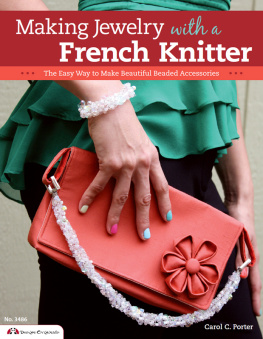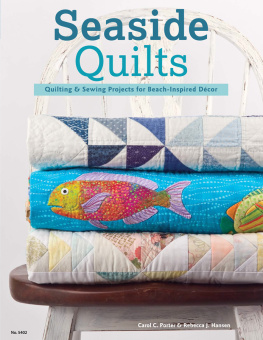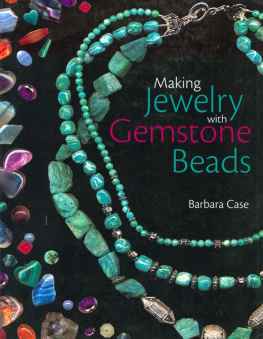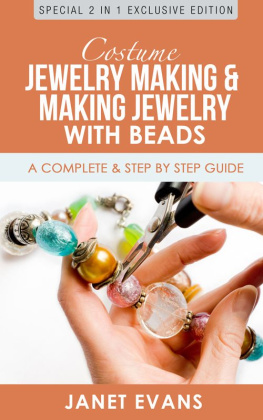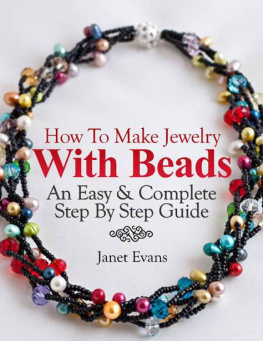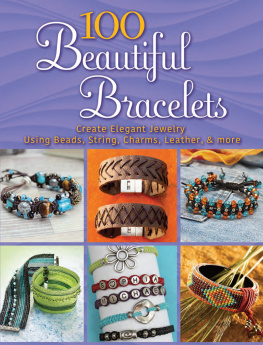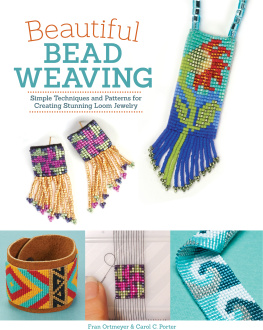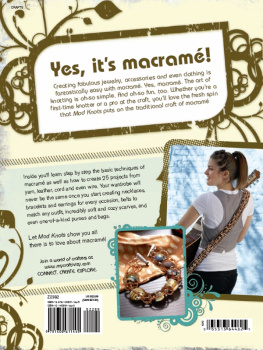eISBN 978-1-60765-136-9
ISBN 978-1-57421-363-8
COPY PERMISSION - The written instructions, photographs, designs, patterns, and projects in this publication are intended for the personal use of the reader and may be reproduced for that purpose only. Any other use, especially commercial use, is forbidden under law without the written permission of the copyright holder. Every effort has been made to ensure that all information in this book is accurate. However, due to differing conditions, tools and individual skills, neither the author nor publisher can be responsible for any injuries, losses and other damages which may result from the use of the information in this book.
INFORMATION - All rights reserved. All images in this book have been reproduced with the knowledge and prior consent of the artists concerned and no responsibility is accepted by producer, publisher or printer for any infringement of copyright or otherwise, arising from the contents of this publication. Every effort has been made to ensure that credits accurately comply with information supplied.
WARNING: Due to the components used in this craft, children under 8 years of age should not have access to materials or supplies. Under rare circumstances components of products could cause serious or fatal injury. Neither Design Originals, Suzanne McNeill, the product manufacturer or the supplier is responsible.
NOTE: The use of products and trademark names is for informational purposes only, with no intention of infringement upon those trademarks.
2012 by Carol C. Porter and Design Originals, www.d-originals.com, 800-457-9112, 1970 Broad Street, East Petersburg, PA 17520.
eBook Version 1.0

Acknowledgements
Thank you to:
David for support of a crazy dream and edits.
Rachel for stretching your photographic wings.
Devon for your effortless, artistic modeling talents.
Melanie, Rachel, Zella and Nina for your natural modeling efforts.
Matthew for lending your camera knowledge, direction, and camera.
Jonathan and Bradley for supporting all of us getting our jobs done.
This is my Porter Family and I love you all.
A special thank you to Alicia Carr for contributing designs.
Thank you to Clover Needlecraft, Inc., for its support, products, and for promoting education.
Getting Started with the French Knitter Tool
This booklet showcases French knitting, also known as spool knitting. This form of knitting conjures up childhood memories of a wooden spool with four finishing nails hammered around the core. With this device, you formed a long knitted tube (known as an I-cord). Later, you might coil it into a hot pad. This book takes this basic process, then adds modern assorted beads and an array of fibers to get contemporary French knitting projectsglamorous, spectacular jewelry pieces. I present specific projects here so you can see how the process works. You will be delighted to see how easy it is to create jewelry in your own style.
The French Knitter Tool
I recommend the French Knitter, a bead jewelry tool manufactured by Clover Needlecraft Incorporated. This tool has great versatility. The interchangeable heads each have a different number of pegs. Included also is a hook that allows for easy manipulation of the stitch over the peg. This tool fits comfortably in your hand.
To remove the head, turn the head counterclockwise and gently pull up.
To attach the head, set the head in the notches on the main body and turn clockwise until it clicks.

French Knitter tool. Main body, 4-peg head, 5-peg head, 6-peg head, hook.
Fibers & Beads
Fibers
Traditionally, knitters used hemp and yarns with the French Knitter tool. Today there is a growing selection of fibers and fashion colors available to complement any project. In this booklet, we most often use yarn with metallic threads, bead-stringing wire, monofilament, 2-ply lam cord, Perle cotton, embroidery floss, and leather. No doubt you will establish your own palette of favorite colors and cords.
Tip: Beyond appearances, the touch and tensile strength of the fibers are important considerations. If the fiber is hard to work with or breaks frequently, it is best for you to find an alternative.

Fibers. There are many types and colors of fibers to use.
Beads
The array of sizes, colors, and materials in the bead world can be overwhelming! How the French Knitter is used will help you navigate through this maze.
Beads are knit, not strung, into the jewelry. The number of beads used in French knitting is dependent on how many pegs are used and how often beads are added to the knitting.
The width of the bead eyelet must easily pass over the fiber. Good planning is necessary before running off to the bead store. For all of the pieces in this booklet, we use E beads (about 4mm), 6mm, and 8mm.
If you use larger beads (8mm), you must also consider how many can fit down the throat of the French knitter. You may also want to use the head with four pegs because it has more space between pegs and less beads in the knitted round. Also, using a larger bead in combination with smaller ones allows for that bead to slide down the throat more easily.

Bead sizes. The Beach Glass Bracelet uses a 4-peg head and all larger beads, while the Silver & Black Bracelet uses the 5-peg head and intermittent large beads.
Tip: Sequins and buttons are great substitutes for beads.
Findings
Youll also need a few types of findings to complete these projectsall the necessary clasps and parts for necklaces, earrings, and other types of jewelry.
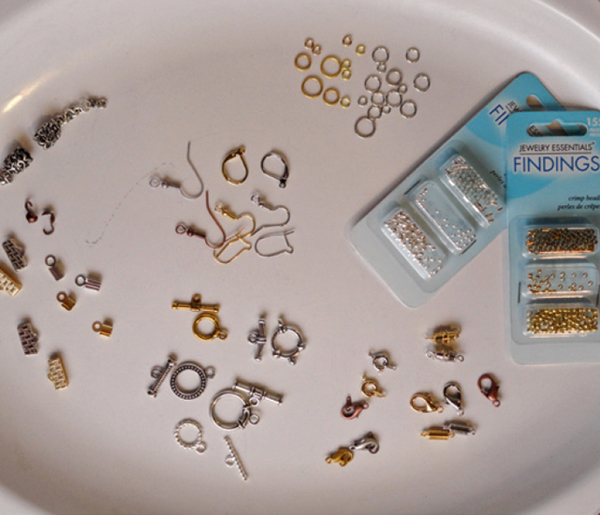
Findings. Jump rings, toggle clasps, earring wires, crimp beads, ribbon clasps, and end caps.
Additional Tools
In addition to the items listed previously, you will need some basic jewelry-making tools to complete the projects found here, such as wire cutters, glue, and wonder clips.
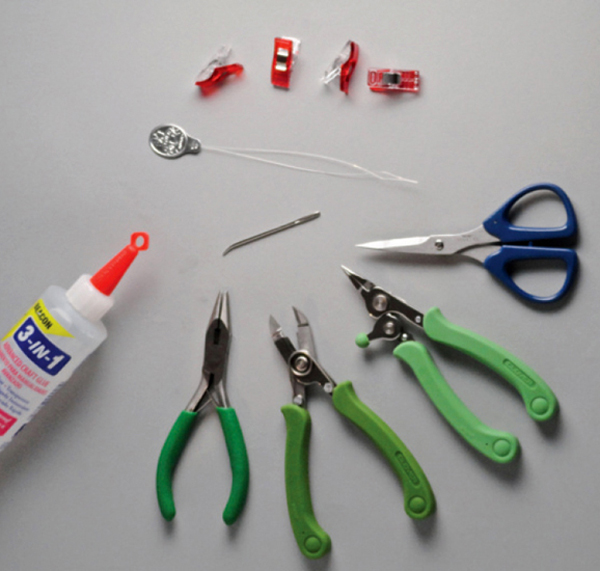
Tools. Bead threader, pliers, wire cutters, scissors, glue, darning needle, and wonder clips.
General Instructions & Methods
Each project makes reference to this section so you can achieve consistency and good results. The two methods described below accomplish the same results. Which you choose is up to you: some people like both techniques; others prefer to focus on only one. There are three heads with peg options. All options use Method A or Method B and can produce a single or double-loop stitch. The differences are noticeable in the tube width and density.
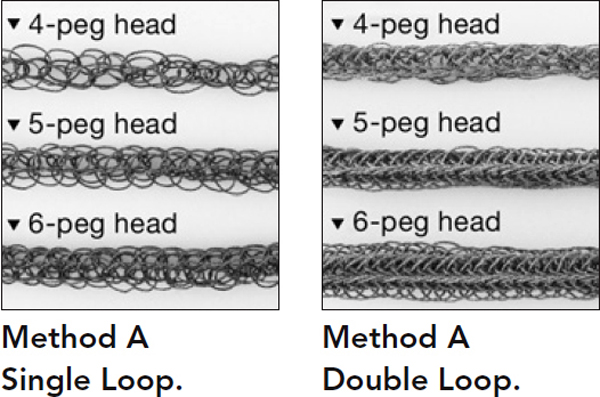
Method A: Single-Loop Stitch (Knit Over One Row)
Pre-string the beads.
Next page
